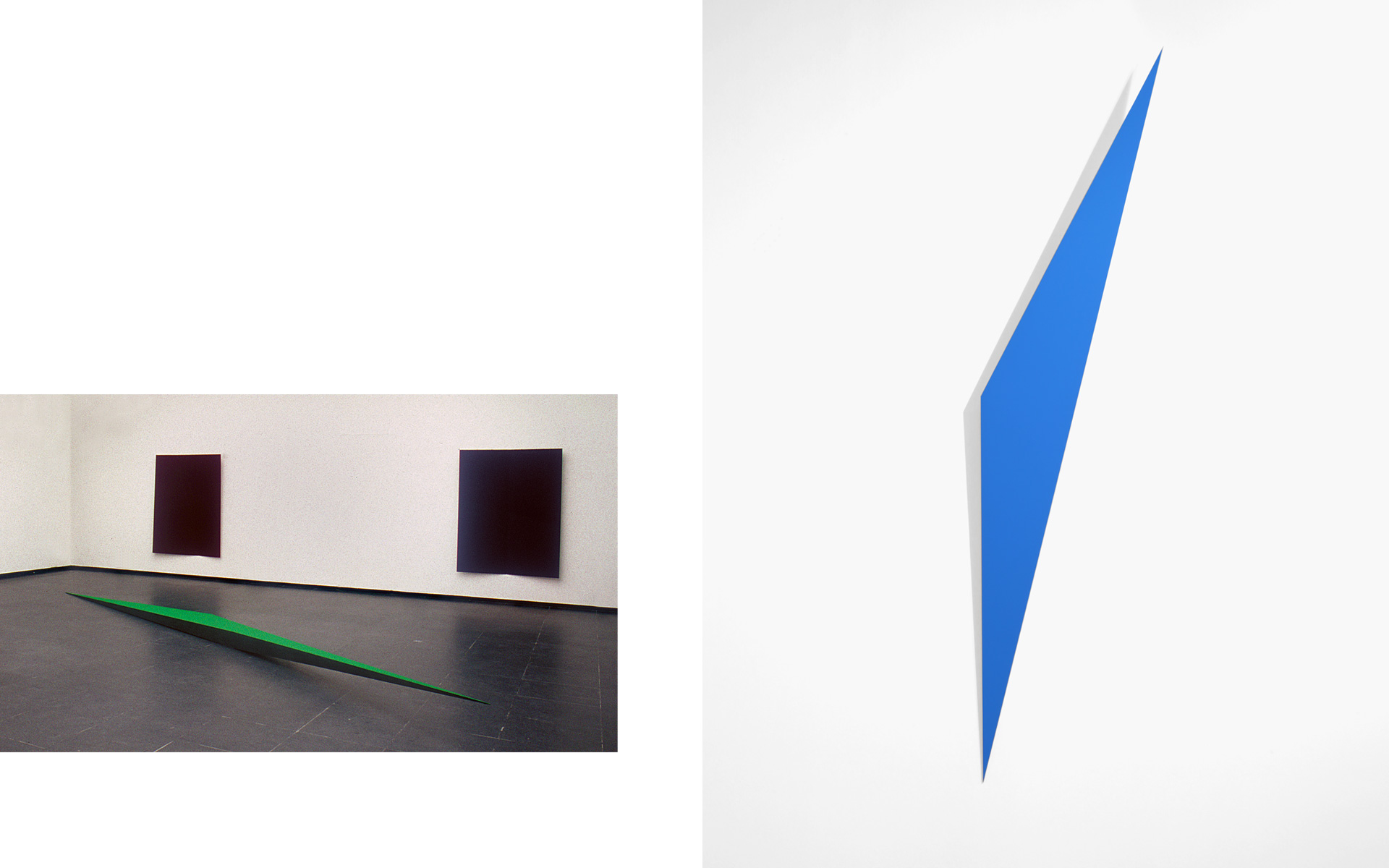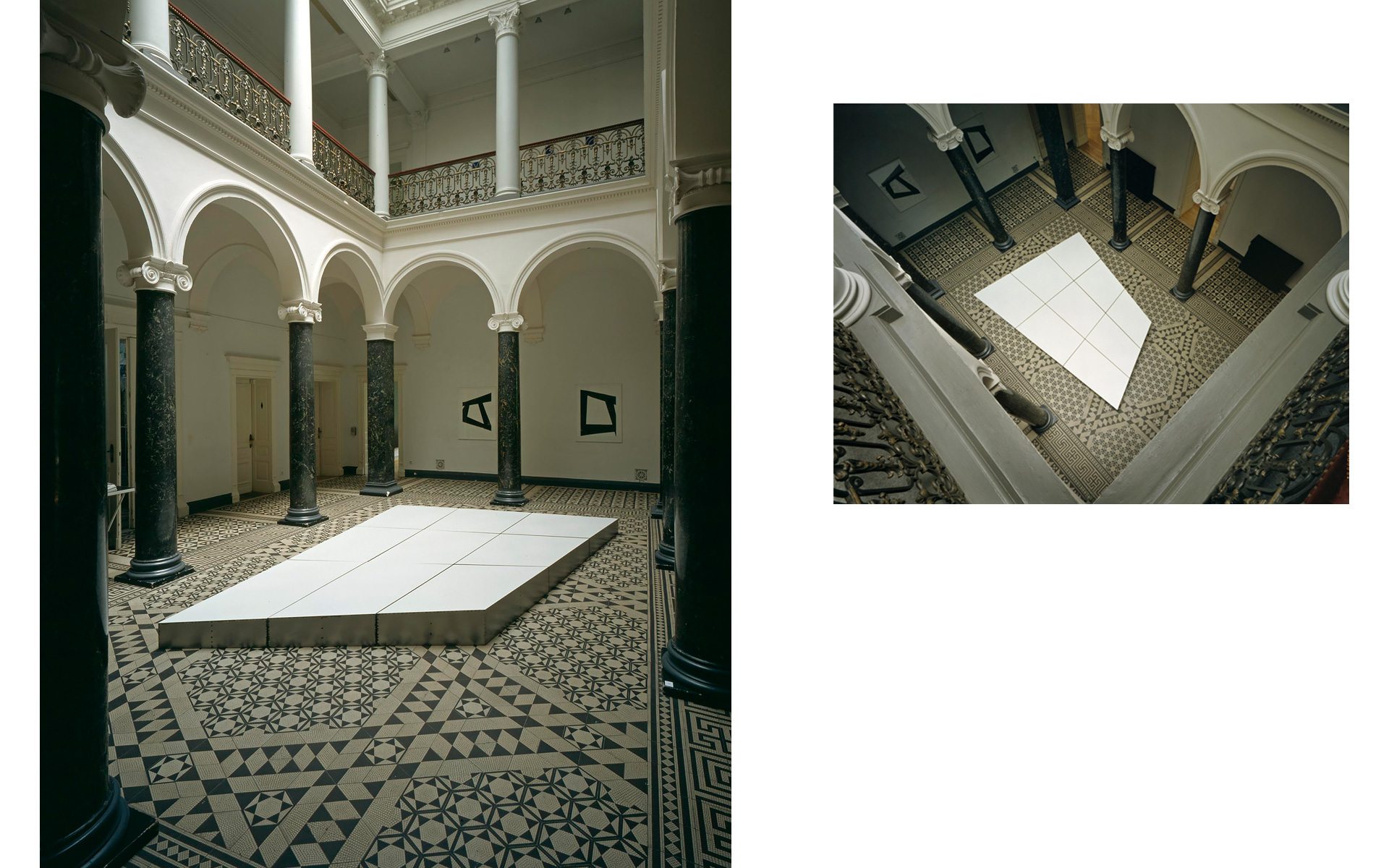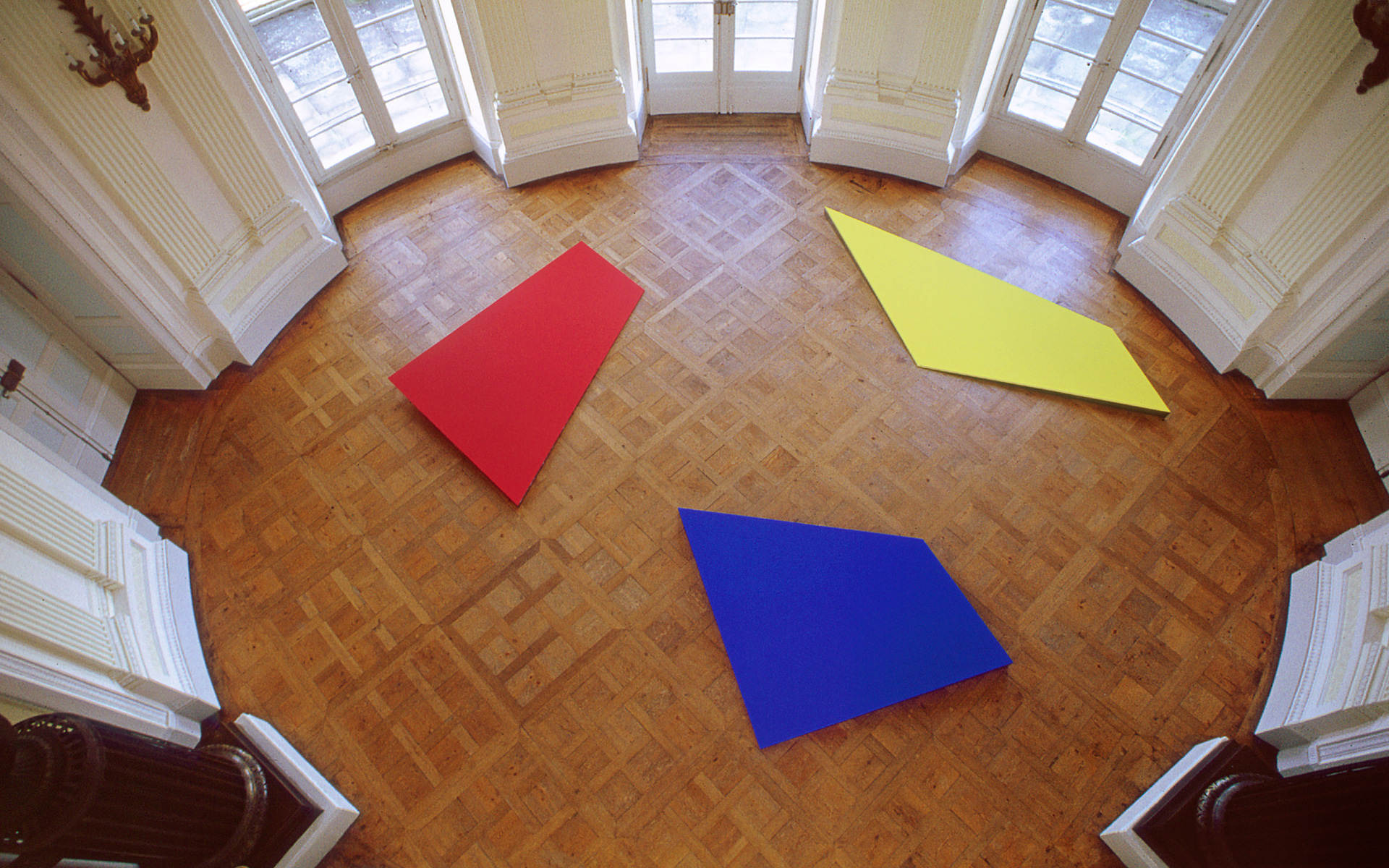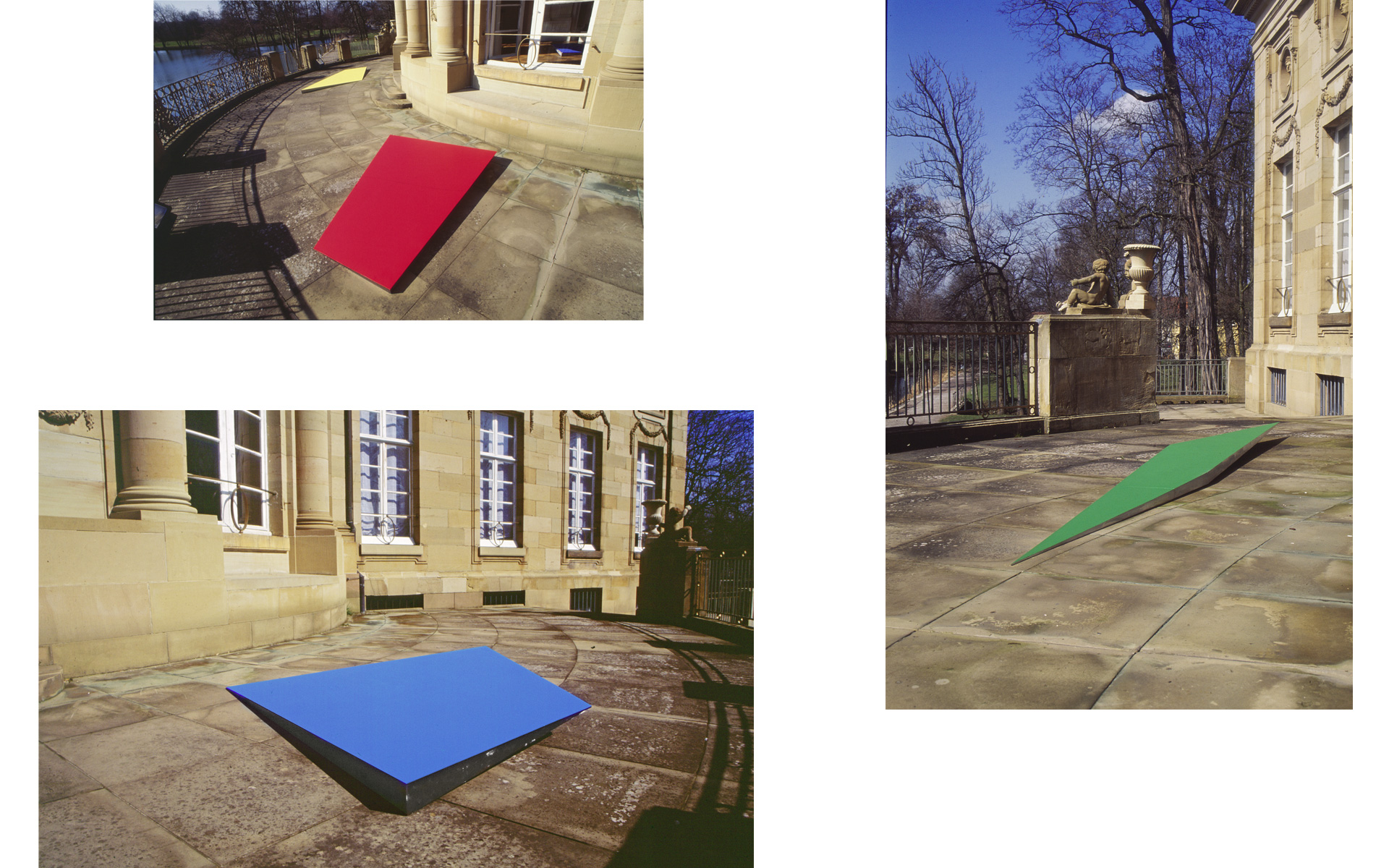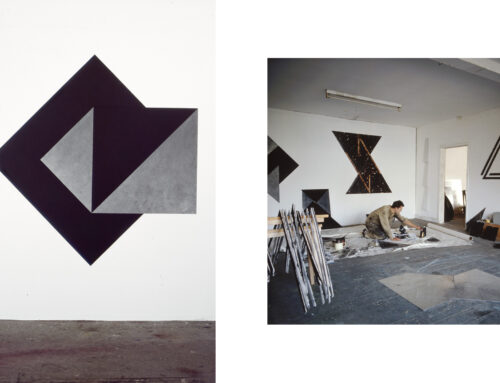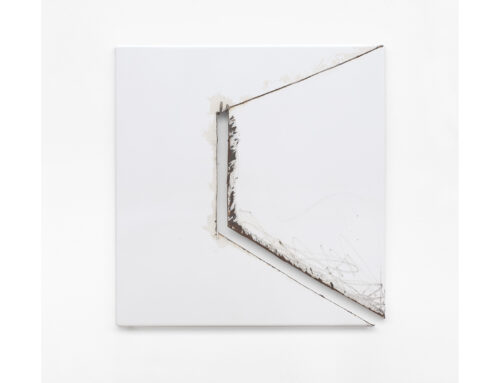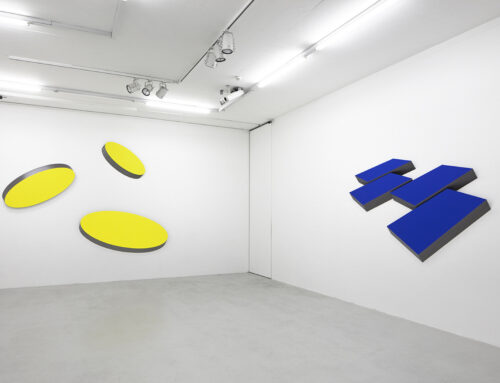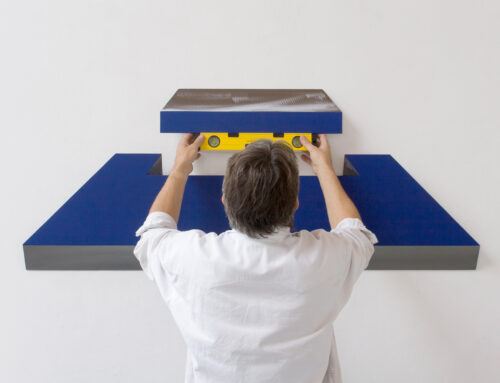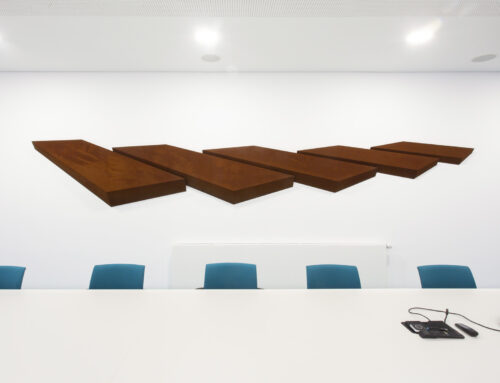From wall relief to spatial object
07
___ Art frequently has to adapt to exhibition spaces. The architectural specificities of a museum or a gallery, their reach and heights partly determine what can be exhibited there. It is part of curatorial practice to select accordingly; content is of course key, but unfortunately it often has to be custom fitted. What happens though, when the hanging space simply isn’t available? “No wall? – No art!”, might be the short answer. Or art conquers places you might never expect.
___ At the Palais Liechtenstein in Vienna, Wolfram Ullrich faced just such a challenge. The baroque palace boasts its own lavish wall decorations, and therefore offered no vertical surfaces for the installation of the reliefs he wanted to exhibit there back in the 1990s. It was a welcome opportunity, therefore, to break with convention and take the decision to go to ground. Yet Wolfram Ullrich didn’t simply set up his previously created folded works on the parquet. Neither the works, nor the flooring would have allowed it. The artist therefore decided to develop entirely new works for these rooms: his Islands.
___ When art is created explicitly for an exhibition space, there is an invaluable opportunity to have the one respond to the other. As you might assume, Wolfram Ullrich did not create his works in order to emulate the historic style of the Palais Liechtenstein’s wall decorations, but rather created an ambivalent dialog of space and concrete art. He borrowed the colors for his islands from the existing ceiling paintings, for example, yet the angular shapes and irregular shapes nevertheless contrasted with the decorative ambiance, and in how they were positioned they dissected the rhythm and the structure of their surroundings. Together with the light coming in through the window, a curious tension developed, which contributed to the dramatic enhancement of the artworks, doing so very much in the spirit of the Palais: After all, the creation of such effects is thoroughly in keeping with the style principles of the baroque.
___ The positioning of works on the floor is fundamentally somewhat unconventional for observers and also for the methods Wolfram Ullrich had used up to that point. At the same time, this digression slots neatly into his oeuvre, since he has always sought to unsettle perception. Even their mere size, which ranged from ten to 15 square meters per floor-based work, meant the pieces could never really be perceived in their entirety. Yet the shapes themselves also featured a somewhat vexing geometry and could not be reconciled with one’s exiting knowledge of spatial bodies. Through the shifting of the observer position, the impression created by the works changed in situ again and again. With every change of perspective, you suddenly felt like you were looking at an entirely different work. At times it was the flat color field that came to the fore, at others the sculptural entities with their edges. The changing incidence of light depending on the position of the sun underpinned this vexing effect. Thus, movement and light were external factors that nevertheless influenced the works, as was familiar from Wolfram Ullrich’s previous reliefs.
___ As unusual as the floor-based works may have initially seemed for the oeuvre of Wolfram Ullrich, they in fact are very logical: In them, an object for the wall is discussed as an object on the floor – the question of spatiality that Wolfram Ullrich raises is thus actually borne into the space and addressed there.
___
Text: Dr. Theres Rohde


